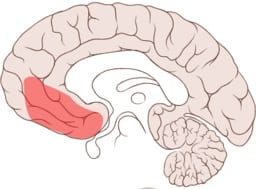WHY DOES HE CHOOSE DRUGS
OVER FAMILY?
Photo by Jerry Kiesewetter on Unsplash
Does it help to know that the addict’s brain has been hijacked?
Drugs take over the brain’s reward system and ruin decision-making.
Drugs are chemicals. When someone puts these chemicals into their body, either by smoking, injecting, inhaling, or eating them, they tap into the brain’s communication system and tamper with the way nerve cells normally send, receive, and process information.
Our brains are wired to make sure we will repeat healthy activities, like eating, by connecting those activities with feeling good. Whenever this reward circuit is kick-started, the brain notes that something important is happening that needs to be remembered, and teaches us to do it again and again, without thinking about it. For example, we instinctively associate eating with not feeling hungry.
But drugs of abuse “hijack” the same circuit. They imitate the natural “feel good” and crank up feelings of pleasure by causing large amounts of a brain chemical called dopamine to flood the system. This flood of dopamine causes the “high” or intense excitement and happiness (sometimes called euphoria) linked with drug use.
By comparison, the “natural” reward system is a trickle of dopamine, a mere whisper.
The first time a person uses drugs, it’s usually a free choice they’ve made. However, repeated drug use causes the brain to change. Now the person seeks out and uses drugs over and over, despite negative effects such as stealing, losing friends, family problems, or other physical or mental problems brought on by drug use—this is addiction. The word “addiction” is derived from a Latin term for “enslaved by” or “bound to.”
The addict’s choice to ‘pick’ drugs over you and your relationship are not personal. They would do it to anyone – and they probably do. Drugs do not simply matter more than you – they matter more than everything in this world – food, water, shelter, health, career, stability, their reputation, family, everything. So you see, it is not you specifically.
Source: https://kleantreatmentcenters.com/Why-Your-Addict-will-always-Choose-Drugs-over-Love
Key thought: It is not personal. An addicted brain is a changed brain.
Practical take-home: You cannot fix someone’s addiction through argument, punishment, or appeals to love. You can’t stop an addict from using. Not by loving them or threatening them. You can protect yourself and the children.
We asked a local doctor to explain in her words
Dr. Erin: “Here is my take: Our brain is divided into different regions. The lower parts of the brain or brain stem cover basic functions like hunger, breathing, movement and are very primitive. I call this your “lizard brain.” The lizard brain wants what it wants and will get it at any cost. Opiates feed this part of the brain and the drive to use is very primitive and hard to ignore.
“The front parts of the brain are involved in thinking, higher emotions like love, planning for the future, setting and keeping a schedule, understanding the consequences of actions, and so on. The more opiates are used to “feed” the lizard brain, the less engaged your higher functions become. It should come as no surprise that, when the lizard brain is in control and is crying out for what it wants, things like packing a lunch for your kids, bath time, showing up at school, saving your paycheck to pay for new shoes, calling to say you’ll be late, or even telling the truth about anything becomes impossible.
“Even after becoming sober, the lizard brain is screaming for attention. It is not until after a significant sober period and counseling that people will develop the “muscles” of the higher mind in a way that enables them to be honest and loving family members and effective parents again.”

Erin Kershisnik, MD
Vantage Physicians in Olympia, Washington.
Not a brain scientist?
No worries. Take a look at Dr. Dan Siegel’s “hand model” of the brain. It is useful way to understand how the basic parts of the brain work together–and what happens when they don’t!
Close your hand into a fist so that your thumb is tucked under your fingers. If you look at your hand from the side, you will notice that your fist looks somewhat like the brain. Your fingers are the frontal cortex –behind your forehead–and your wrist is the brain stem. The fingers wrapped over the thumb correspond to the frontal cortex which is where we do most our thinking, and choice-making. It’s our thinking cap. Here’s where the brain says, “NO!”
The thumb down deep inside the “brain” is the brain’s alarm system with the job of watching for signs of danger–and for opportunities to feel good. It is also vital to memory and reward seeking. This is where the brain says, “GO!”
In a healthy brain, there is strong communication and connection between these brain parts, and the cortex manages to “think” about feelings and emotions coming from lower brain.
But drugs can interfere with normal pathway of connection—lift your fingers. Thus someone may lose the ability to make good decisions and instead act on the unfiltered signals coming from below.
The good doctor explains brain anatomy in a way that even your grandchild can understand–and remember.
The cortex (pink) wraps around the deep brain where emotion and memory arise. The pre-frontal cortex (red) is key in decision-making.

Dig a little deeper
The human brain is the most complex organ in the body. This three-pound mass of gray and white matter sits at the center of all human activity—you need it to drive a car, to enjoy a meal, to breathe, to create an artistic masterpiece, and to enjoy everyday activities. In brief, the brain regulates your body’s basic functions; enables you to interpret and respond to everything you experience; and shapes your thoughts, emotions, and behavior.
The brain is made up of many parts that all work together as a team. Different parts of the brain are responsible for coordinating and performing specific functions. Drugs can alter important brain areas that are necessary for life-sustaining functions and can drive the compulsive drug abuse that marks addiction. Brain areas affected by drug abuse include:
- The brain stem, which controls basic functions critical to life, such as heart rate, breathing, and sleeping.
- The cerebral cortex, which is divided into areas that control specific functions. Different areas process information from our senses, enabling us to see, feel, hear, and taste. The front part of the cortex, the frontal cortex or forebrain, is the thinking center of the brain; it powers our ability to think, plan, solve problems, and make decisions.
- The limbic system,which contains the brain’s reward circuit. It links together a number of brain structures that control and regulate our ability to feel pleasure. Feeling pleasure motivates us to repeat behaviors that are critical to our existence. The limbic system is activated by healthy, life-sustaining activities such as eating and socializing—but it is also activated by drugs of abuse. In addition, the limbic system is responsible for our perception of other emotions, both positive and negative, which explains the mood-altering properties of many drugs.
The brain is a communications center consisting of billions of neurons, or nerve cells. Networks of neurons pass messages back and forth among different structures within the brain, the spinal cord, and nerves in the rest of the body (the peripheral nervous system). These nerve networks coordinate and regulate everything we feel, think, and do.
- Neuron to Neuron
Each nerve cell in the brain sends and receives messages in the form of electrical and chemical signals. Once a cell receives and processes a message, it sends it on to other neurons. - Neurotransmitters – The Brain’s Chemical Messengers
The messages are typically carried between neurons by chemicals called neurotransmitters. - Receptors – The Brain’s Chemical Receivers
The neurotransmitter attaches to a specialized site on the receiving neuron called a receptor. A neurotransmitter and its receptor operate like a “key and lock,” an exquisitely specific mechanism that ensures that each receptor will forward the appropriate message only after interacting with the right kind of neurotransmitter. - Transporters – The Brain’s Chemical Recyclers
Located on the neuron that releases the neurotransmitter, transporters recycle these neurotransmitters (that is, bring them back into the neuron that released them), thereby shutting off the signal between neurons.
To send a message, a brain cell (neuron) releases a chemical (neurotransmitter) into the space (synapse) between it and the next cell. The neurotransmitter crosses the synapse and attaches to proteins (receptors) on the receiving brain cell. This causes changes in the receiving cell—the message is delivered.
Although these drugs mimic the brain’s own chemicals, they don’t activate neurons in the same way as a natural neurotransmitter, and they lead to abnormal messages being transmitted through the network.
When some drugs of abuse are taken, they can release 2 to 10 times the amount of dopamine that natural rewards such as eating and sex do.15 In some cases, this occurs almost immediately (as when drugs are smoked or injected), and the effects can last much longer than those produced by natural rewards. The resulting effects on the brain’s pleasure circuit dwarf those produced by naturally rewarding behaviors.16,17The effect of such a powerful reward strongly motivates people to take drugs again and again. This is why scientists sometimes say that drug abuse is something we learn to do very, very well.
For the brain, the difference between normal rewards and drug rewards can be described as the difference between someone whispering into your ear and someone shouting into a microphone.
Chronic exposure to drugs of abuse disrupts the way critical brain structures interact to control and inhibit behaviors related to drug use. Just as continued abuse may lead to tolerance or the need for higher drug dosages to produce an effect, it may also lead to addiction, which can drive a user to seek out and take drugs compulsively. Drug addiction erodes a person’s self-control and ability to make sound decisions, while producing intense impulses to take drugs.
The example of falling in love is sometimes cited. Love does have some similarities with addiction. As discussed by Maia Szalavitz in Unbroken Brain, it is in the grip of love—whether romantic love or love for a child—that people may forego other healthy aims, endure hardships, break the law, or otherwise go to the ends of the earth to be with and protect the object of their affection.
Source: adapted from the National Institute on Drug Abuse https://www.drugabuse.gov/publications/drugs-brains-behavior-science-addiction/drugs-brain

Where is that child go?
Does this remind you of anyone you know?
A scientist writes this about someone with a brain injury to the prefrontal cortex (the fingertips in Dr. Siegal’s hand model):
“[The person’s] deficits included:
egocentricity,
a lack of empathy,
poor decision-making,
socially inappropriate behavior, and an
overall blunted emotional experience with the exception of emotional outbursts that are often frustration-induced.
These individuals tend to be self-indulgent, impulsive, and lack insight with regard to how their behavior impacts those around them.”
Source: from BMC Neurology, Behavioral Effects of Congenital Ventromedial Prefrontal Cortex Malformation, 2011 https://bmcneurol.biomedcentral.com/articles/10.1186/1471-2377-11-151
little prayer
Poem by Danez Smith

